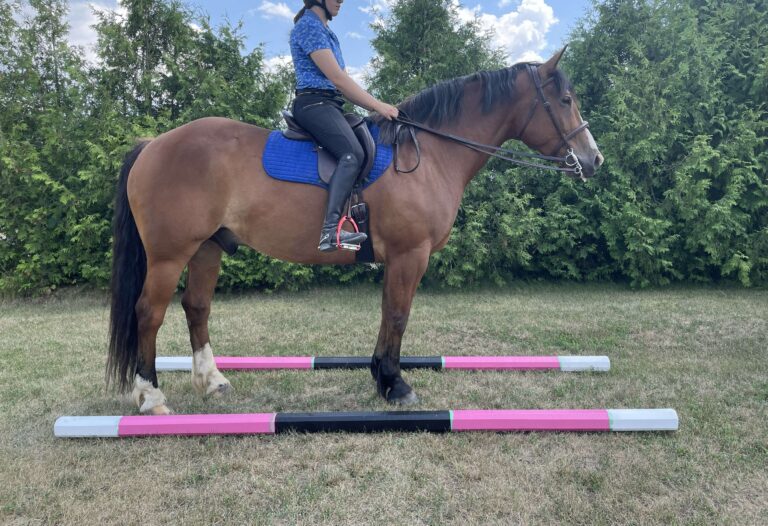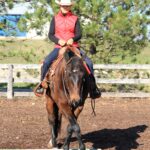
Navigating obstacles – the merits of focusing on footwork.
Part 3 of an article I wrote for Canadian Horse Journal:
Control the feet and you control the horse -advised the founders of the natural horse training movement. And I’ve found it to be true – the key to the horse’s mind is, in a manner of speaking, through his feet.
I include some obstacle work in most lessons I teach. My students reap the benefits of guiding their horses’ steps sideways, backward and forward for use in their other horse activities such as positioning for lead departures or opening a gate from horseback.
Horses learn to wait for instructions. For a prey animal, to have his feet restricted is to be vulnerable. Tension rises when a horse feels trapped and he’ll be inclined to rush. Initially, your horse will be wary about having a side pass pole between his front and hind legs or being sandwiched between backing rails on either side.
Given that his eyes are situated on the sides of his head, he can’t see the poles he’s navigating. He’s obliged to trust in his navigator and wait for each instruction. The patience and listening skills your horse will develop is bound to spill over into other dimensions of his training.
Riders learn to school systematically. The value of teaching your horse to work obstacles by means of logical steps is comparable to the benefit of phonics in learning to read.
My approach to coaching is to help my students to be good teachers. We introduce any skill to our horses using science-based principles of equine learning:
1. Build a skill with the simplest concepts first.
2. Teach one response per signal.
3. Keep signals separate and distinct.
Students who’ve learned by phonics can tackle more complex words by stringing together their pieces. In the same way, backing and side pass obstacles, when set in more complex configurations, are less overwhelming when tackled one movement at a time.
Riders learn to communicate with clarity. Vague cues will only add to your horse’s feeling of vulnerability. Don’t make your horse guess what you want him to do with his feet. Fair horse training is making a clear distinction between your leg positions and rein signals, particularly in the learning phase. These aids can become more understated as your horse grasps the idea.
Riders feel the footsteps. I’ve seen it over and over – obstacles help my students become conscious of their horses’ footfalls. Stepping over, backing around and through ground rails opens a new awareness of their horse’s hooves.
Obstacles provide a commercial break in training. I use obstacle training as a transition in the rhythm of a schooling session. For example, after canter work, a slower maneuvering task such as a side pass or backing obstacle provides an intermission in the lesson plan. And, if done well, a place of rest versus stress.

